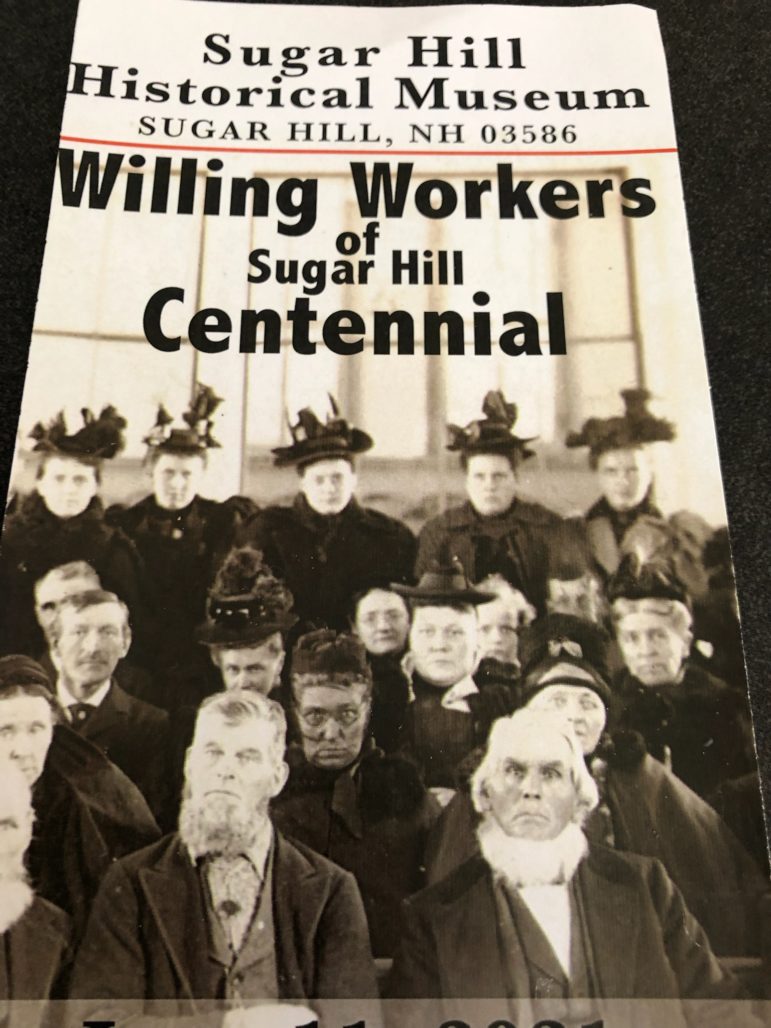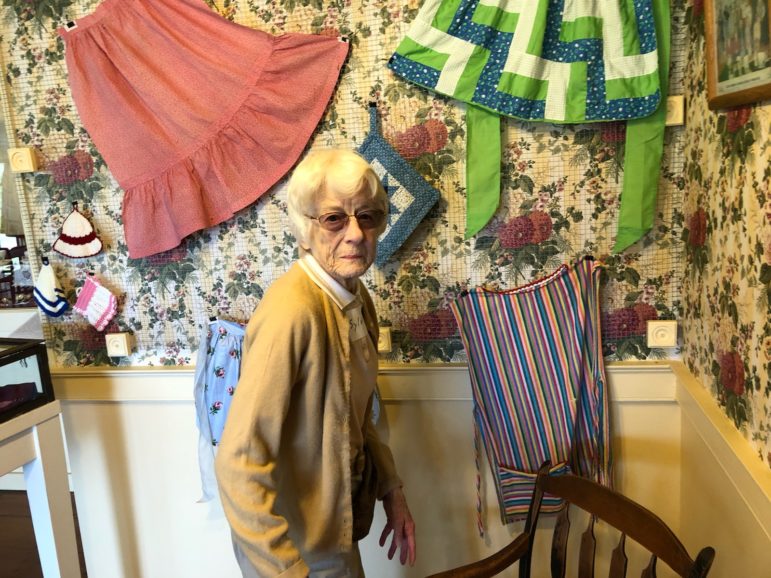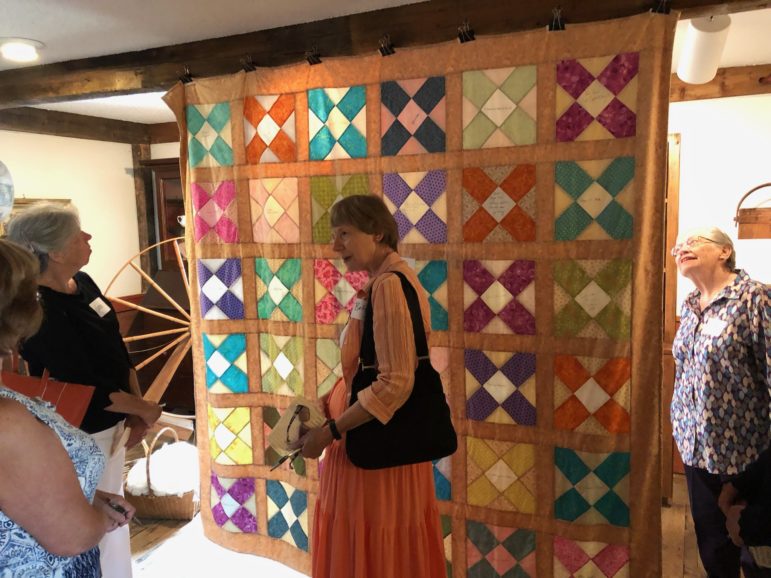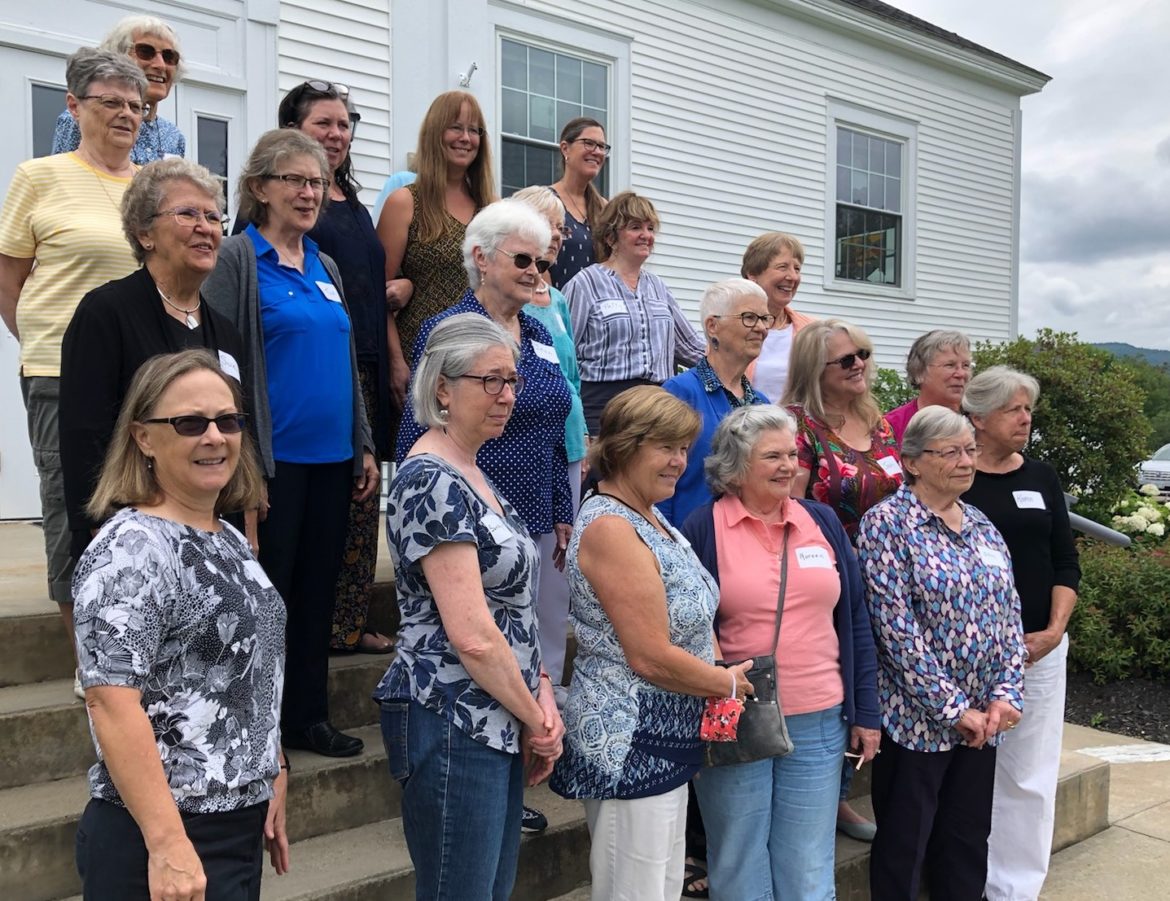
By PAULA TRACY, InDepthNH.org
SUGAR HILL – So much of what I love about New Hampshire is its small communities and how they come together to help one another in times of need.
The state has over 10,000 nonprofit organizations knit into the fabric of the state’s mountains, streams, and downtowns, fueled by volunteers and their willingness to step in to do the right thing for one another.
On Thursday, I was invited by a friend to join in the celebration of a centennial of one of these organizations, held 101 years after it was incorporated, and celebrated a year late because of the pandemic.
In addition to the cake and pot luck salads lunch, members of the Willing Workers of Sugar Hill’s centennial luncheon included a tour of a historical exhibit of their group which is open through Oct. 11 on Fridays and Saturdays from 11 a.m. to 3 p.m. at the Sugar Hill Historical Museum. The exhibit is free.
It honors and displays some of the good works of the Willing Workers over the years since 1920.
Sugar Hill is a small White Mountain town nestled between Franconia and Lisbon, with magnificent views of Mount Lafayette, beautiful old homes that are well-cared for, and a few nice inns still in operation.
It has a population of under 600 and has maintained a strong sense of itself in no small measure by its people, generations of Aldriches, Lovetts, Coffins.
The Willing Workers first started out as an organization to help support its churches and pay for the salary and winter wood supply for its minister.
But it became its own non-profit organization, there for families who had suffered a loss of life, with food for the funeral. The workers made quilts for each bride in the town and still to this day give a gift at Christmas to every single child. It has provided scholarships and more from the proceeds of their bake sales and events which they participate in each year, from the Lupine festival in the spring that celebrates the marvelous fields of flowers to its fall foliage festival and Christmas traditions.

These days, the group distributes milk weekly from Hatchland Dairy to local food pantries in addition to other acts of kindness.
Today, about 50 members continue in that tradition, which was a bit stymied by the pandemic. The monthly luncheons were reduced to Zoom meetings.
So it was with great, unmasked joy that about 30 members gathered at the former Crapo school basement room to see one another again, enjoyed some lunch and birthday cake and finally celebrated the organization’s endurance, survival.
Lunch included a wonderful concert by the North Country Chamber Players, who themselves are celebrating their 43rd summer of free, one-hour concerts offered the next two Saturdays and Sundays at 4 p.m. in Franconia’s downtown at the Dow Pavillion.

Pat Brown greeted me at the meeting. She noted her mom, Lucy Aldrich, joined the Willing Workers, likely in the early 1960s, and was also a member of the Grange and other service organizations supporting the town.
Sylvia Hutchinson is one of the longest-serving members of the Willing Workers, who served over the years as its president for about 16 years but also its secretary and vice president.
“I was told that if I hadn’t served as president for more than 15 years it would have probably disintegrated,” Hutchinson said.
Sometimes, it is just one person volunteering that keeps the organization together.
“It was different than it is now,” she conceded, noting that there are many new faces today which keeps things alive but that back in the old days, “people knew everybody.”
Some of the members are just summer residents and cannot participate in the annual Christmas celebrations. Others are busy with work, visiting families, and cannot spend the time they once did, sitting around a quilting table laughing and talking.
They all wear name tags now, she noted, and that is needed.
“We did a lot of personal things to help the community,” Hutchinson said, over the years.
Hutchinson said she used to come every summer to Sugar Hill. Then she moved to Lisbon and then to Sugar Hill and has spent almost all of her life here.
With her cane, she moved carefully through the exhibit, featuring the handcrafted items that have surfaced, especially the bride quilts, which have the names of those members who worked on each piece.

Kitty Bigelow and Kathy Jablowski showed a 1909 quilt that is on display, found in a Massachusetts attic.
Rose Ellms said she was a new resident to town with a four-month-old baby and members of the organization immediately recruited her to work on the Christmas celebration, “and they would not take ‘no’ for an answer.”
Barbara Underwood, who now lives in Newport, R.I., but maintains a seasonal home in Sugar Hill, said she was recruited after attending the fall foliage celebration more than 20 years ago. She is the one who called me to come to do a story on the group and suggested I make a salad for us to bring.
It was a hastily thrown together pasta salad featuring every half box I had, with my homegrown tomatoes and basil. There were more than 15 other salads, plus baked goods, delicious and nice to enjoy around a table once again.
The exhibit is a piece of living history and well worth a day trip visit from across the state as the weekend days cool and the leaves turn, or perhaps overnight at the Sugar Hill Inn or the Sunset Hill House.
Located at 1401 Route 117, the Sugar Hill Historical Museum offers a glimpse into New Hampshire’s marvelous agrarian history, its commitment to its neighbors, and its sense of community, which thanks to people like Sylvia, endure to this very day.
Paula Tracy’s first big hike was in 1975 with classmates from Concord up Mount Lafayette with teacher and outdoor enthusiast Ned Bergman. She was 13 and was immediately captured by the wonders of New Hampshire’s great outdoors. It would lead to a lifetime love of exploring the woods, water, and wildlife in the Granite State. As a staff reporter, for 25 years at the NH Union Leader and then for WMUR.com, she has written about the subject extensively and continues here with the hope of connecting New Hampshire’s residents with their own backyard.






